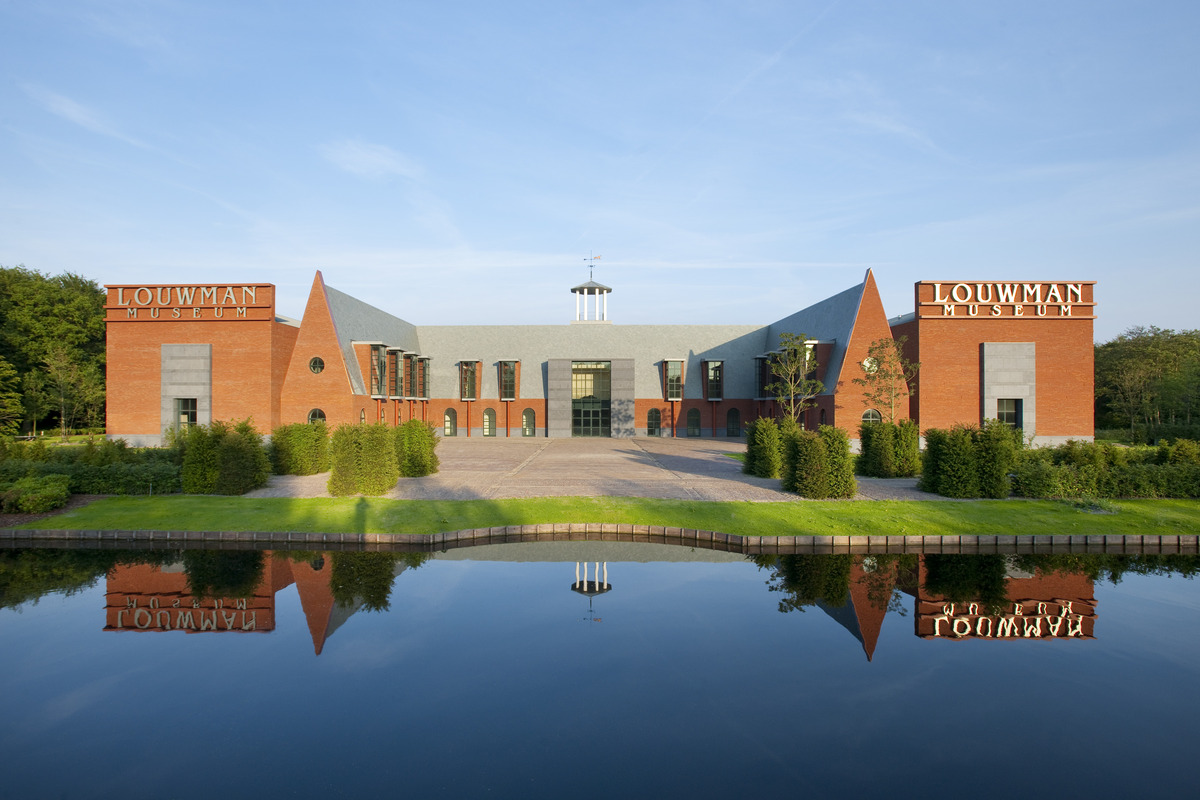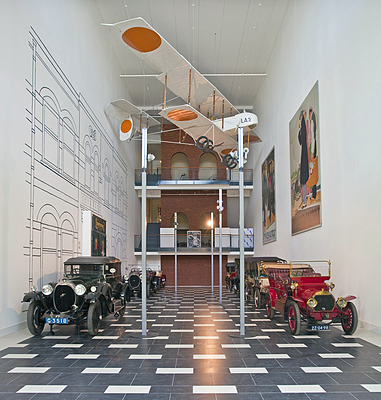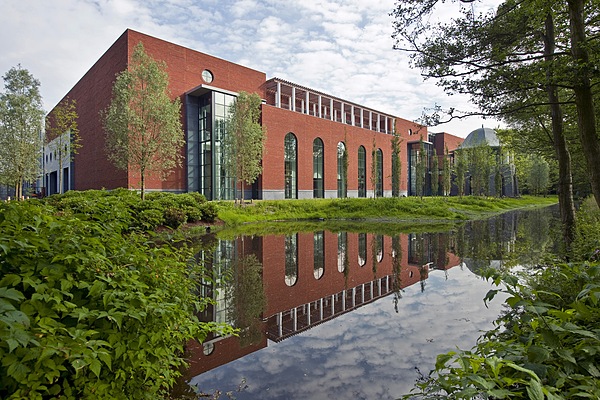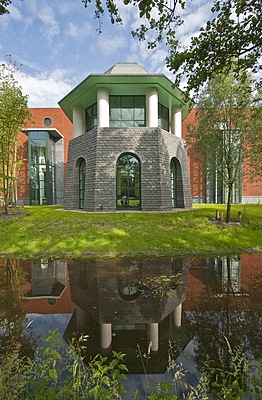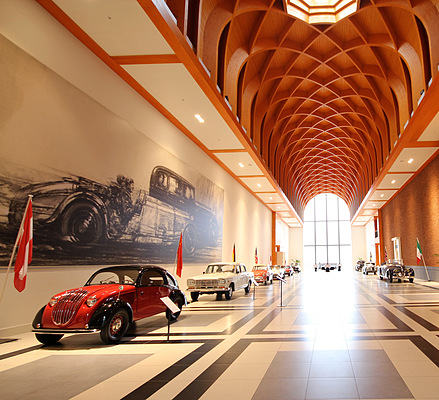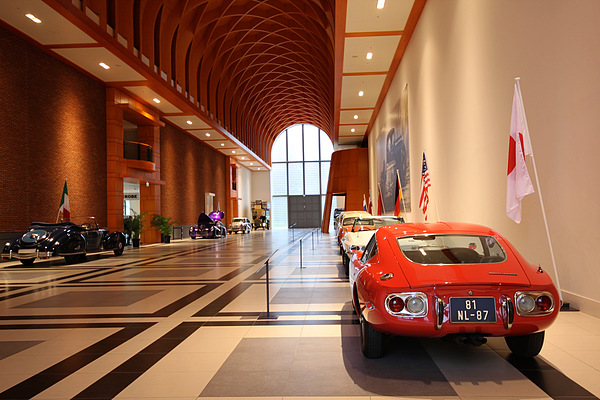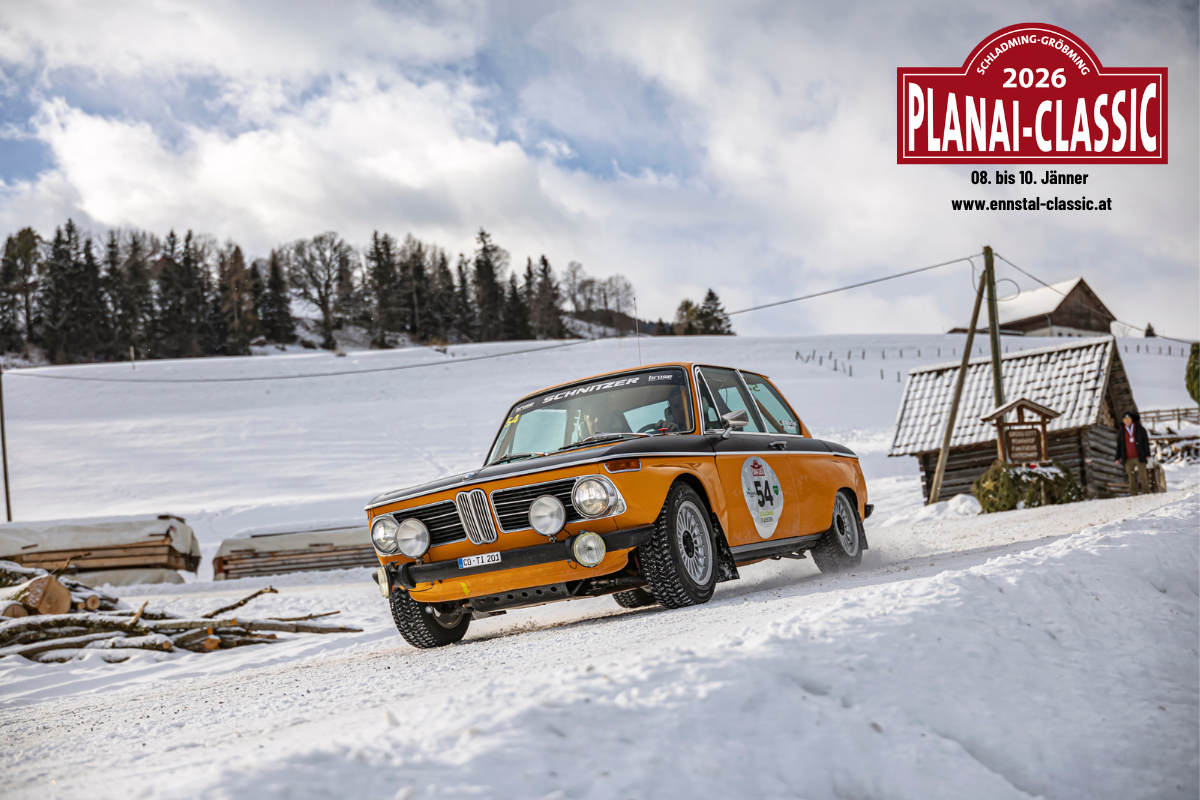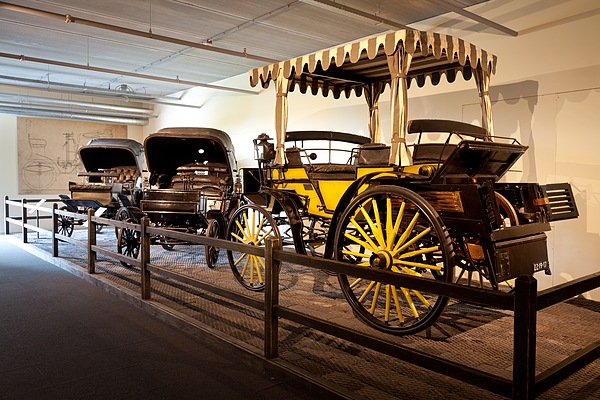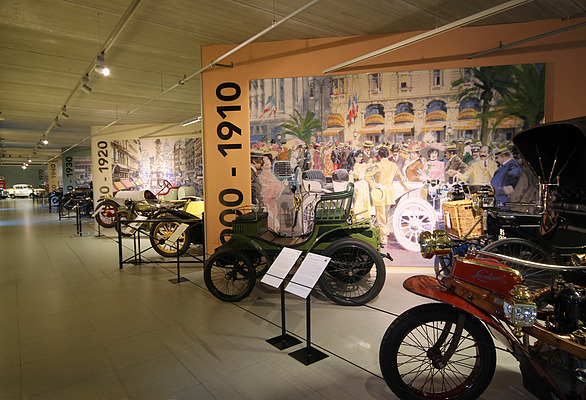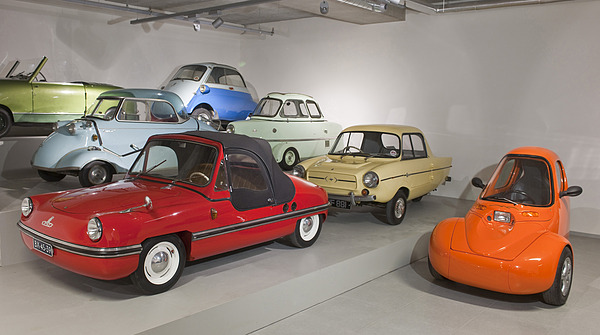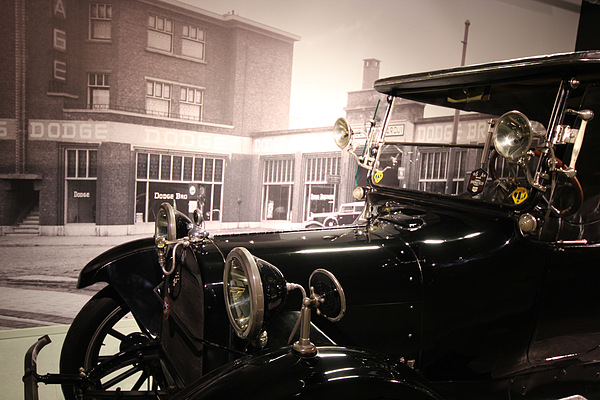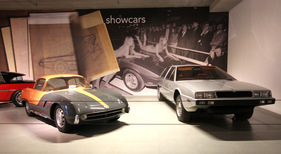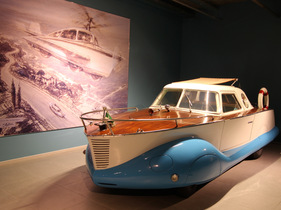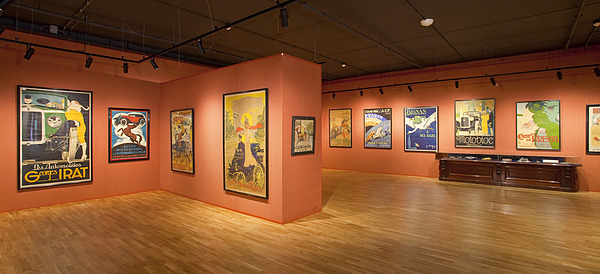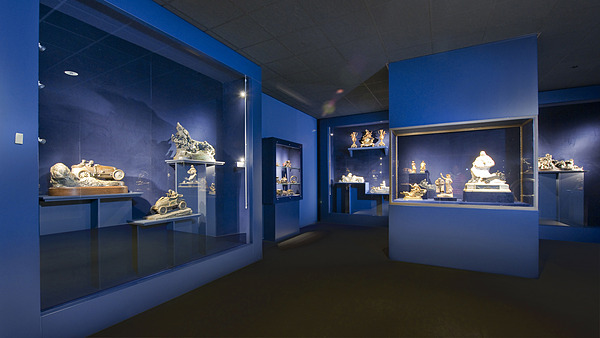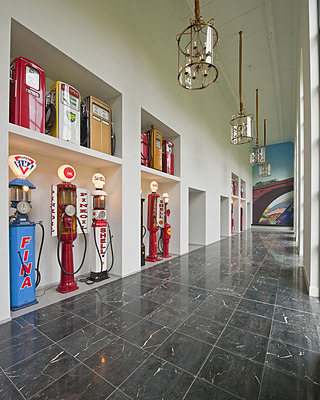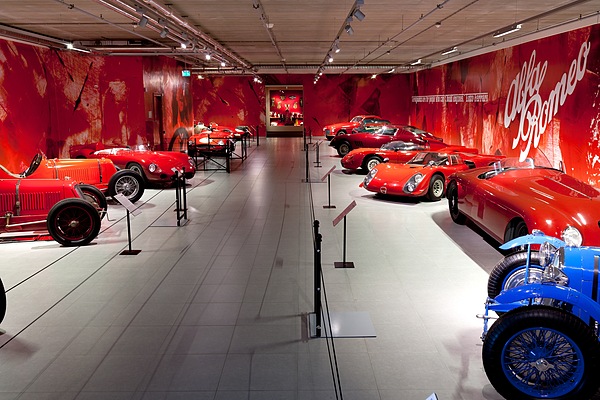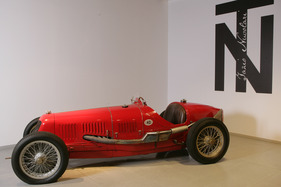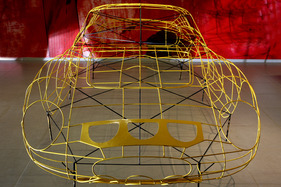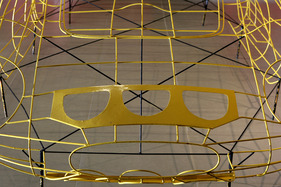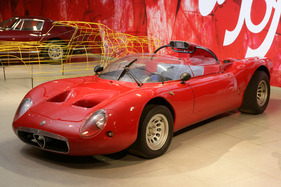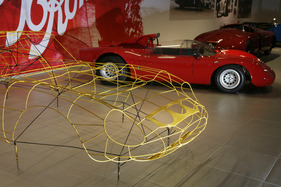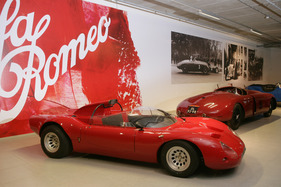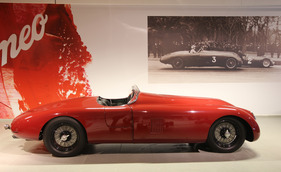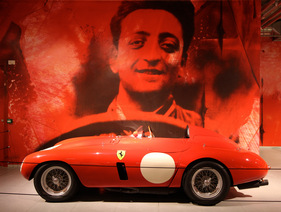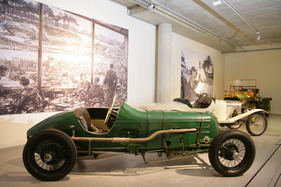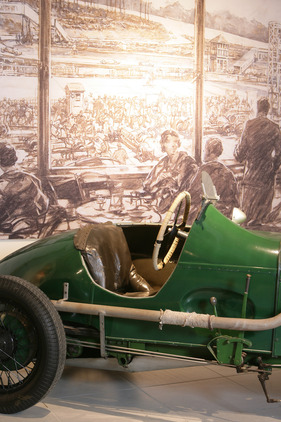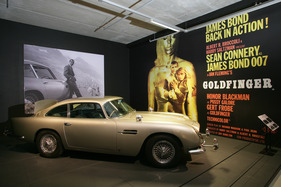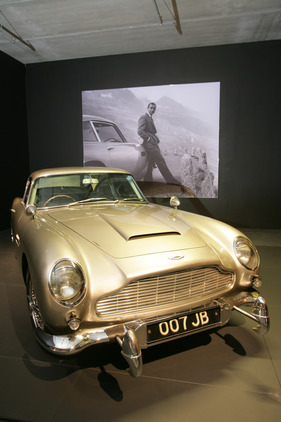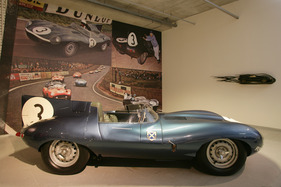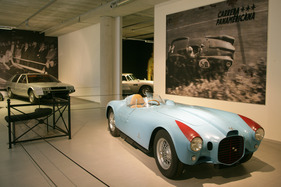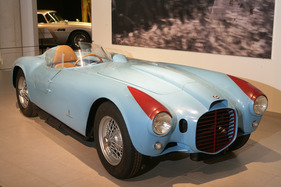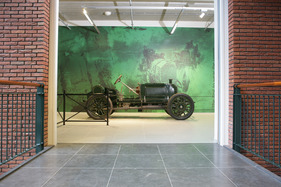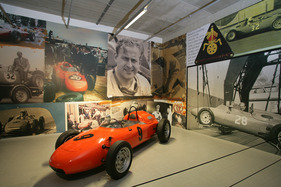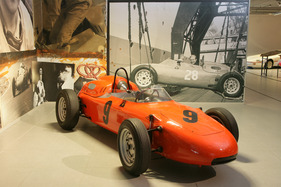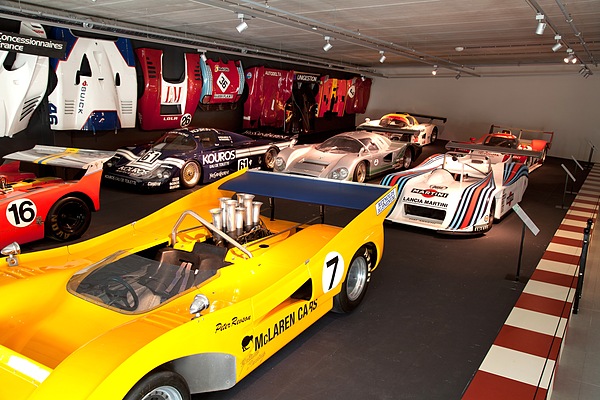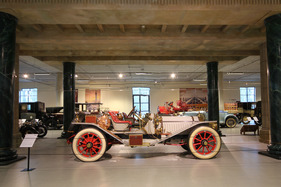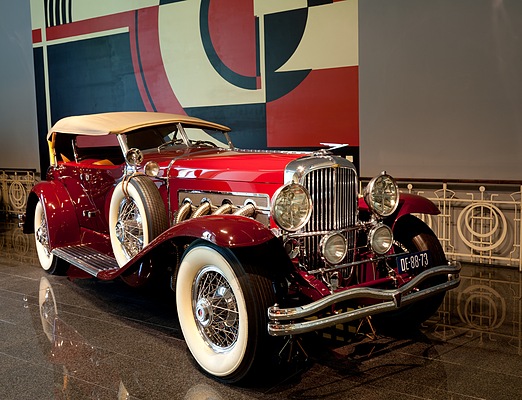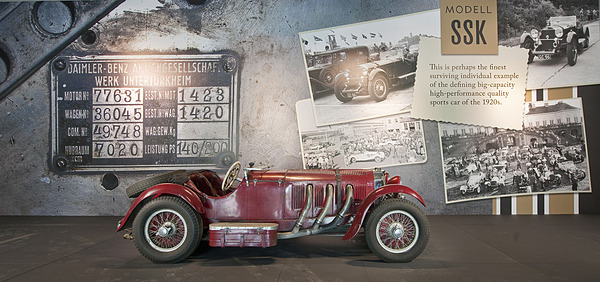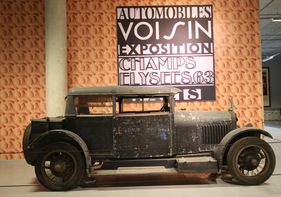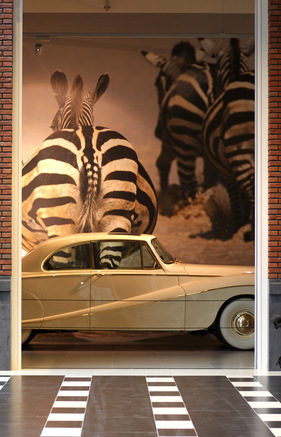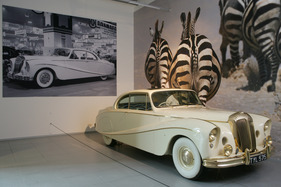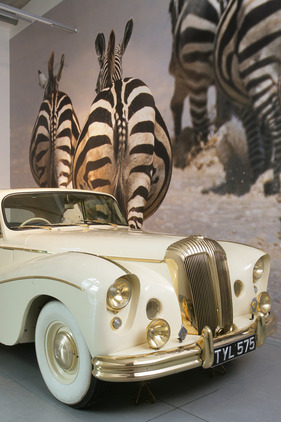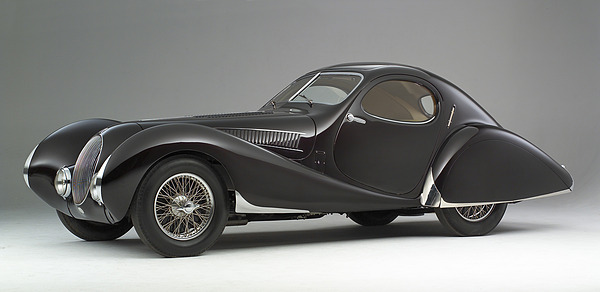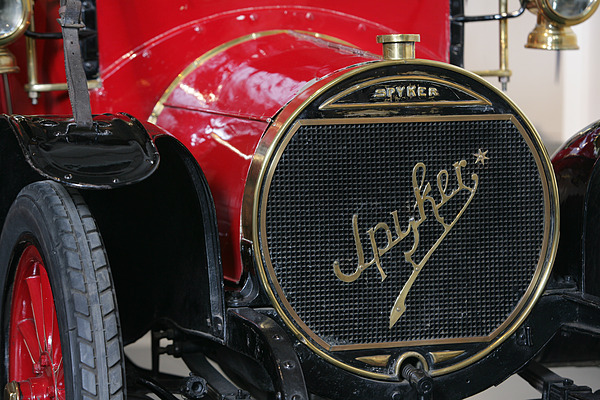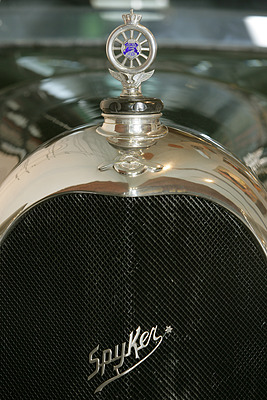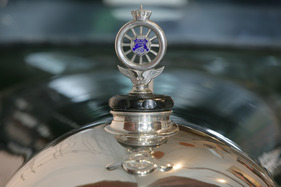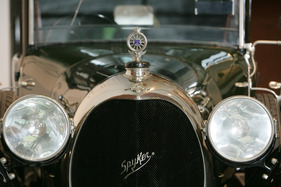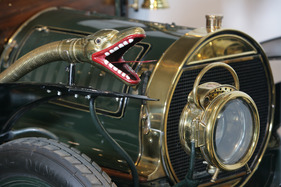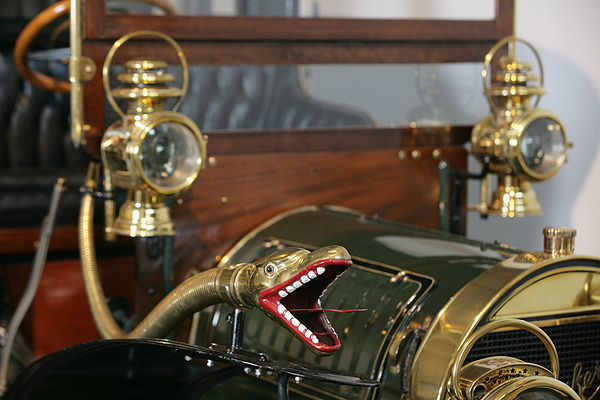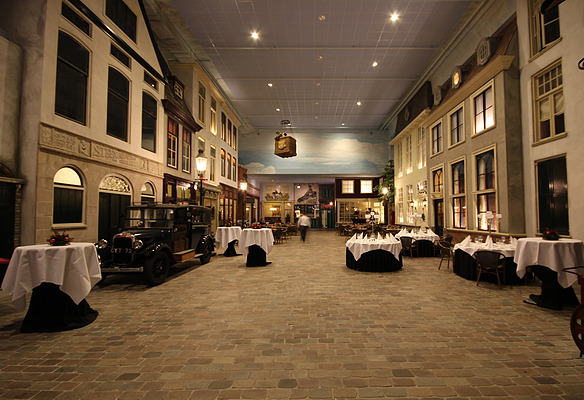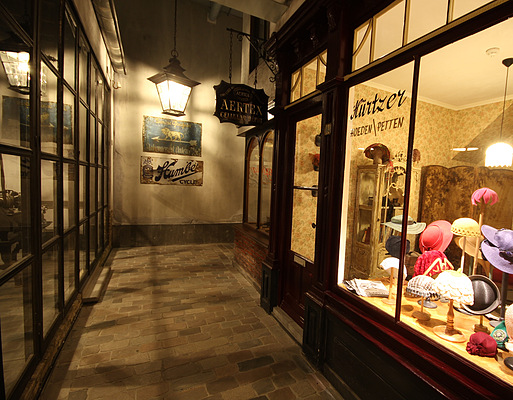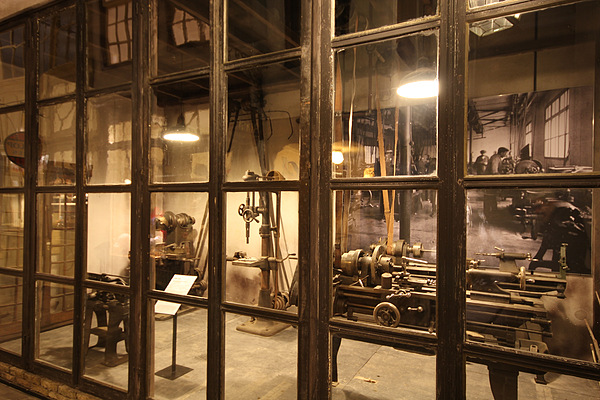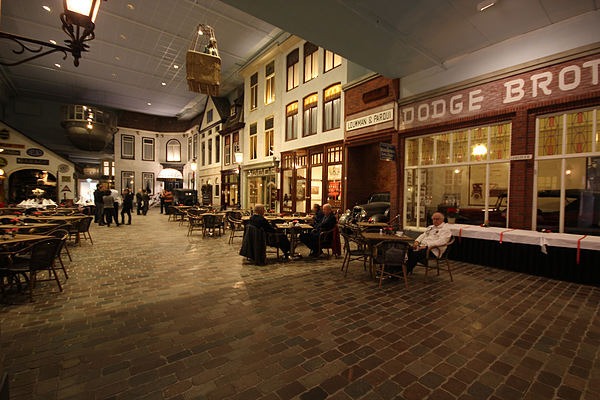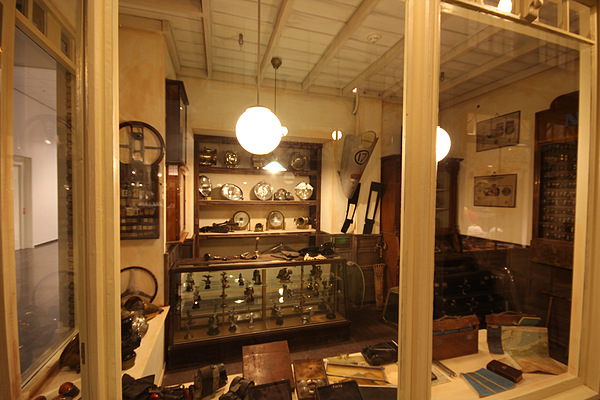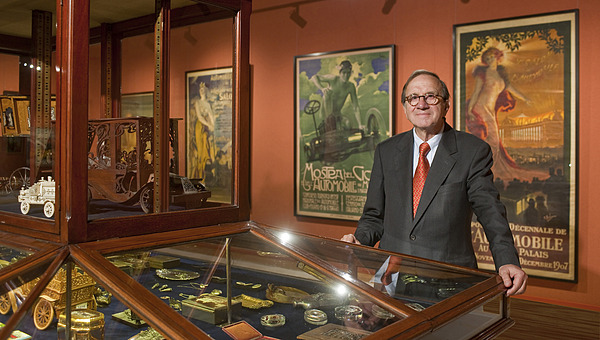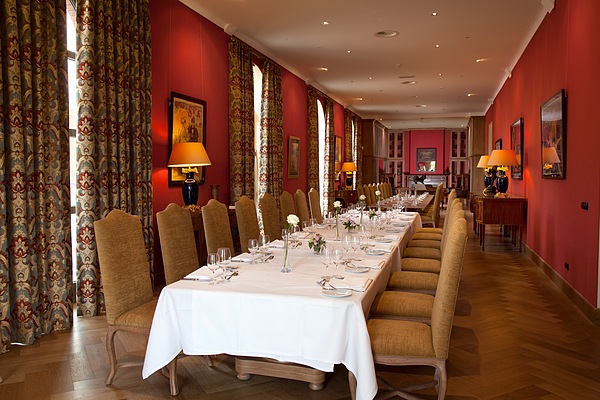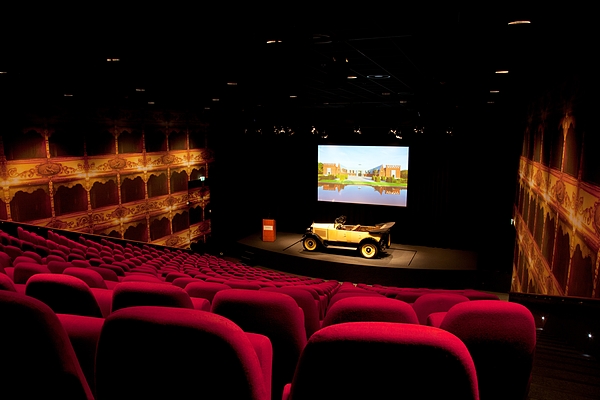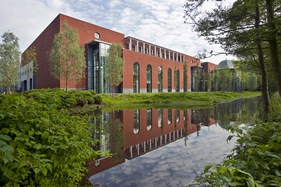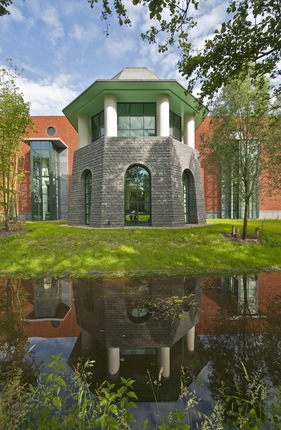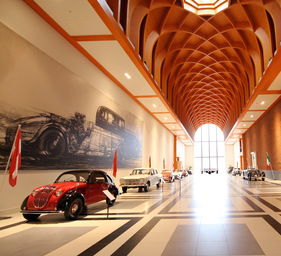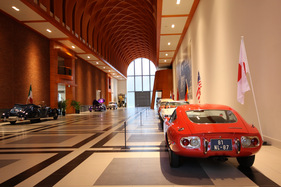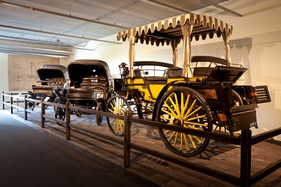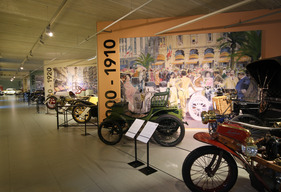Cars should be shown in motion, they should be heard, smelled and felt. A museum cannot accomplish all this, but other advantages come into play. A museum can bring together a targeted selection, determine the context, set the lighting accents, provide information with descriptive texts/films and, above all, convey joy even on a cold and damp winter's day.
The Louwman Museum in The Hague (Netherlands) immediately casts a spell over visitors, time flies by and takes them on a journey through 125 years of automotive history.
Modern yet historic architecture
The building, which has been home to the Louwman Museum for just over a year, was newly built by American architects Michael Graves and Gary Lapera. It is located in a romantic park in the immediate vicinity of the royal palace, so to speak.
The architecture is both modern and interspersed with historical references. The spacious premises (23,000 square meters are available) provide space for around 250 vehicles on three floors. The building also houses a theater/performance hall, a dining room, a library with a fireplace and a large indoor piazza, where the restaurant is located and small showrooms and artisan stores are set up in small side streets and around the main square.
These original stores alone, some of which were dismantled 1:1 in England and rebuilt in The Hague, are almost worth a visit to the museum. And some people will recognize things on the shelves of the historic retail stores that they remember from their youth or from stories told by their grandparents.
Cross-section, not depth
It is not the intention of the Louwman Museum to depict a particular brand or a particular period of time in a particularly consistent way, but rather to provide an overview of the entire history of motorization. This is not a simple story, even with 250 exhibits. An attempt has therefore been made to depict the world of the automobile from different perspectives.
In the entrance hall, visitors are given an overview of the most important automotive nations, each in combination with a typical representative of that country. Here we find, for example, a Daf 600 prototype, a Citroën DS, a Volvo PV 444 CS, a Tatra 87, a Chevrolet Corvette Stingray, a Jaguar XK 120 (FHC) or a Toyota 2000 GT. Exquisite exhibits, but not necessarily eye-catching, although they are certainly suitable for representing a country.
On the three floors of the main wing, you will find the history of the automobile and an overview of 125 years of the automobile at the top, racing cars and a selection of paintings, sculptures and pictures one floor below, luxury cars and the elegant, exclusive vehicles of the rich and famous can be admired at the bottom, as well as a unique Spyker show.
The largest collection of early automobiles ("the dawn of motoring")
Thanks in part to acquisitions from other museums, the Louwman family today has one of the richest collections of early automobiles, starting with the "De Dion, Bouton et Trépardoux" steam four-wheeler from 1887, through vehicles from Peugeot, Daimler, Panhard, Darracq, Worth Thirion, FN, Goddu, Sunbeam-Mabley to the Benz Patent Motorfahrzeug (in the form of a reconstruction), and that is only part of the fabulous list.
The motorization era continues with vehicles such as the Darracq 12 HP Genevieve from 1904, a Ford Model A, a Hupmobile 32 Coupé from 1914, up to a Lafitte from 1923 or a Fiat 509 A from 1928.
Thematic focuses
Vehicles such as the Lloyd LP 500 (1951), the Citroën 2CV (1956), the Nash Metropolitan (1957) or the Ford Anglia (1962) are grouped together under various thematic focuses, whether these are vehicles that are cheap to maintain, small vehicles, sporty vehicles, concept vehicles, sports and racing cars or vehicles sorted by drive type.
Those who love American cars will certainly not miss out on the Louwmans, who were successful importers of the Dodge brand, among others: Dodge, Chrysler, Kaiser, Cadillac, Desoto, Hudson, Studebaker, Franklin, etc., there is a wide variety of body styles, makes and eras on display.
Impressive Spyker Hall
You can't miss the impressive Spyker Hall. Not only does it extend from the floor of the building to the ceiling (with an early aircraft), it is also probably the most extensive Spyker collection in the world.
Spyker was the name of the two brothers Jacobus and Hendrik-Jan Spijker, both coachbuilders, who quickly broke away from tradition and began to build progressive and sensational automobiles in Amsterdam at the beginning of the 20th century.
The first four-wheel-drive racing car with a six-cylinder engine, the Spyker 60 HP from 1903, for example, can be attributed to them, as well as vehicles such as the Spyker models 14/18-HP Double Phaeton from 1906 and 15/22-HP Double Phaeton from 1907, 15/22-HP Three Quarter Landaulette from 1907, 7-HP Two-Seater from 1912, C1 13/30-HP Torpedo Touring from 1919, C4 Standard Torpedo Cabriolet from 1924 or C4 All-Weather Coupé from 1922 can be admired in detail in the Louwman Museum.
Rarities and classics
Among the many exhibits, there are also a number of cars that particularly caught our eye. There is the Daimler DK 400 'Golden Zebra' Coupé, several pre-war Maserati monoposti, beautiful Alfa Romeo 6C and 8C sports cars, the Alfa Romeo Tipo 33 'Periscopo' from 1967, a Ferrari 750 Monza Scaglietti Spider, a Lancia D23 Spyder Pinin Farina from 1953, a whole series of other famous race winners and participants from all over the world, Giovanni Michelotti's sensational Fiat 8V Démon Rouge from 1953 or the wire mesh on which Scaglietti tested the fit of his hand-formed Ferrari 250 GTO panels. An Aston Martin DB 5 from James Bond can also be admired, as well as a whole series of luxury cars and Concours d'Elegance winners. For our Swiss friends, there is also a Sbarro Challenge I from 1985 to discover.
The nice thing, however, is that a list like the one just presented would be put together differently by everyone, and this is precisely what makes the Louwman Museum so appealing. Everyone is likely to find cars in the variety that captivate them and never let go.
Objects at the center, perfectly staged
The cars take center stage, as was intended. However, their charisma is further enhanced by photos, images and accessories, which are almost always masterfully presented. Whether it's the zebras running in the background of the Daimler coupé or the photos of old American houses, the museum designers have shown a happy hand in their choice of vehicle surroundings.
Cars complete and, in principle, drivable
In principle, all the vehicles are complete and most of them can be driven, possibly after a certain amount of preparation, said Managing Director Ronald Kooyman during our visit. Nevertheless, the vehicles on display are not all over-restored cars in top condition, but there are many "patinated" vehicles dripping with history.
Informative and never boring
All the cars are described on clearly visible plates and the purchase of a museum catalog is highly recommended, not only because of the beautiful photos, but also because of the expert explanations that can be found in it. At €12.50 (as of 2012), it is also inexpensive and an asset to any car library.
For many, The Hague (approx. 460 km from Frankfurt, approx. 280 km from Cologne or approx. 850 km from Zurich) will not exactly be on the way, but the visit is also worth a longer journey, provided you have enough time and leisure to immerse yourself in the history and essence of the exhibits. We will certainly be back, with more time in our luggage than this time.
Opening hours and further information can be found on the museum's website .
